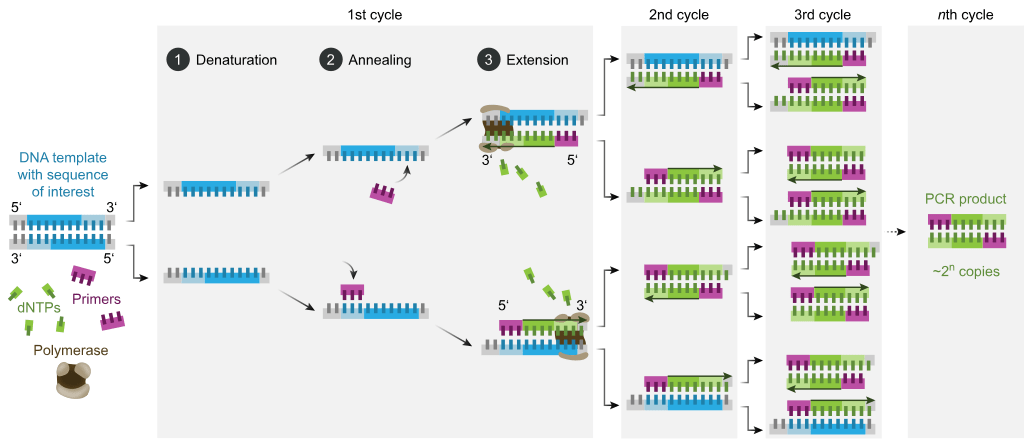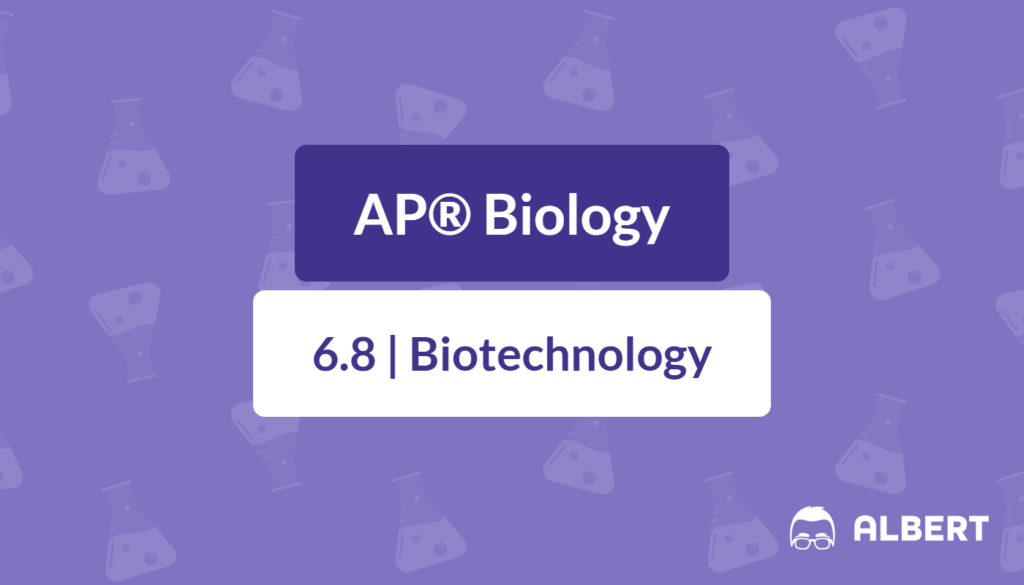Below is a structured post that follows the provided outline to help AP® Biology students explore biotechnology concepts, techniques, and applications. This article also integrates examples and practice questions for better understanding.
What We Review
Introduction
At its core, biotechnology is the use of living organisms or their components to develop or make products that benefit society. These products can range from life-saving medications to agricultural solutions that enhance food production.
Undoubtedly, biotechnology has revolutionized medicine, agriculture, and environmental management. It enables scientists to manipulate genetic material to treat diseases, improve crop yields, and address pollution-related challenges. By understanding the foundations of biotechnology, students can appreciate its far-reaching impact.
For those preparing for the AP® Biology exam, biotechnology is a critical topic. Insights into genetic engineering definition, lab techniques such as gel electrophoresis, and real-life applications will not only help you tackle exam questions but also deepen your appreciation of how biology translates into cutting-edge research and innovations.
Understanding Genetic Engineering
In essence, genetic engineering is the direct manipulation of an organism’s genes using biotechnology tools. Scientists can alter DNA to express desired traits, silence harmful genes, or produce therapeutic molecules. This field has grown to include everything from cloning to modern genomics.
Early forms of genetic manipulation can be traced back to selective breeding in agriculture. However, modern genetic engineering truly took off with the discovery of DNA’s structure in 1953 and the subsequent development of techniques like restriction enzyme digestion, recombinant DNA technology, and polymerase chain reaction (PCR).
B. Key Techniques in Genetic Engineering
1. Gel Electrophoresis
Gel electrophoresis is a method used to separate DNA fragments by size. A gel medium is placed in a buffer solution, and an electric current is applied. Negatively charged DNA fragments migrate through the gel, with smaller fragments traveling farther than larger ones.
Researchers often use gel electrophoresis to analyze the results of genetic engineering experiments, identify DNA fragment sizes, and verify the success of processes like PCR or restriction enzyme digests. Specifically, this technique is instrumental in forensics (DNA fingerprinting), diagnosing genetic diseases, and verifying gene cloning experiments.
2. Polymerase Chain Reaction (PCR)
The polymerase chain reaction (PCR) is a powerful technique used to amplify a specific DNA segment so that it can be studied in detail. If you’re wondering, “What is the purpose of the polymerase chain reaction?” the short answer is: PCR creates millions of copies of a DNA sequence, allowing scientists to work with an ample sample for analysis.
Step-by-Step Process Overview
- Denaturation: Heat separates the double-stranded DNA into single strands.
- Annealing: Primers attach to the target DNA.
- Extension: DNA polymerase extends the primers, synthesizing new DNA strands
- This cycle repeats multiple times, exponentially increasing the quantity of the target DNA segment.

3. Bacterial Transformation
Bacterial transformation involves introducing foreign DNA (often in plasmid form) into a bacterial cell. Therefore, this process allows bacteria to express new traits—for example, antibiotic resistance or the ability to produce certain proteins.
Steps Involved in Introducing DNA into Bacterial Cells
- Preparation of Competent Cells: Bacterial cells are treated to make their cell membranes more permeable.
- Addition of DNA: Plasmid DNA is combined with the competent cells.
- Heat Shock or Electroporation: A sudden temperature shift or electric pulse incentivizes the bacteria to take in the foreign DNA.
- Recovery and Screening: Transformed bacteria are allowed to grow, and successful transformants are identified (often via antibiotic selection).
4. DNA Sequencing
DNA sequencing is the process of determining the exact order of nucleotides (A, T, C, and G) within a DNA molecule. In fact, knowing the precise sequence of a gene, scientists can identify mutations, understand gene function, and develop targeted therapies. Sequencing also underpins large-scale projects such as the Human Genome Project, giving us insights into the complexity of genetic information.
Applications of Biotechnology
A. Real-life Examples of Biotechnology in Action
- Medical Applications (Gene Therapy, Pharmaceuticals)
- Gene therapy seeks to correct genetic disorders by introducing functional genes into patients’ cells. Additionally, pharmaceutical companies use genetically modified cells to produce insulin, vaccines, and other drugs more efficiently.
- Agricultural Advancements (GMOs)
- Genetically Modified Organisms (GMOs) are engineered to resist pests, tolerate herbicides, or increase nutritional value. Overall, this has helped increase crop yields and reduce reliance on certain chemical pesticides.
- Environmental Uses (Bioremediation)
- Engineered microbes can break down pollutants like oil or plastics, helping clean up environmental spills and reduce waste in landfills.
Ethical Considerations in Biotechnology
Consequently, as biotechnology techniques advance, ethical questions arise: Should genetic engineering be used to modify human embryos? How can society ensure responsible biotech research, distribution, and use? Government regulations often set guidelines for safety, responsible experimentation, and respect for patient or environmental welfare.
Accordingly, biotechnology’s impact extends beyond the lab into ecosystems and societies. Ethical biotechnology includes ensuring that developments benefit society equitably, protect the environment, and respect cultural and moral values.
Practice Problems
A. Practice Problems
- After performing a restriction enzyme digest on a DNA sample, you run gel electrophoresis. Undeniably, you notice three distinct bands in the gel. What do these bands represent, and why are they located at different positions?
- What is the purpose of the polymerase chain reaction (PCR), and how does the denaturation step differ from the annealing step?
- A plasmid containing an antibiotic resistance gene is introduced into bacteria. After plating the bacteria on antibiotic agar, only certain colonies grow. Explain what this result indicates.
- What is DNA sequencing, and why is it crucial for understanding genetic disorders?
B. Illustrative Problems
- Practice running a simulated gel electrophoresis analysis based on different fragment sizes (e.g., 500 base pairs vs. 1,500 base pairs).
- Outline the steps of PCR in the correct order, indicating the temperature ranges typical for each phase.
- Devise a hypothetical scenario where a gene of interest is inserted into a plasmid vector, and explain how you would confirm successful bacterial transformation.
- Interpret a short DNA sequence, identifying potential mutations and discussing their possible effects on protein function.
This structured overview and set of practice problems aim to give AP® Biology students a solid foundation in biotechnology. By internalizing these concepts and exploring real-world examples, you’ll be well-prepared to tackle exam questions and appreciate how these techniques shape the future of science.
Conclusion
Biotechnology leverages genetic engineering, including techniques like gel electrophoresis, PCR, bacterial transformation, and DNA sequencing, to drive innovations in medicine, agriculture, and environmental management. These advancements demand careful ethical considerations.
Undoubtedly, mastering the foundational concepts and lab techniques of biotechnology, AP® Biology students will be well-prepared for exam questions and better understand the real-world implications of these powerful scientific tools.
In truth, as research continues to evolve, the future of biotechnology holds immense potential for solving global challenges—from eradicating genetic diseases to sustainably feeding a growing population. Embracing innovation and responsibility will be key for the next generation of scientists.
Sharpen Your Skills for AP® Biology
Are you preparing for the AP® Biology test? We’ve got you covered! Try our review articles designed to help you confidently tackle real-world math problems. You’ll find everything you need to succeed, from quick tips to detailed strategies. Start exploring now!
Need help preparing for your AP® Biology exam?
Albert has hundreds of AP® Biology practice questions, free response, and full-length practice tests to try out.








